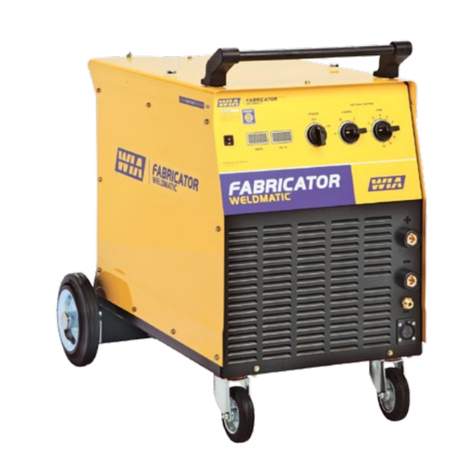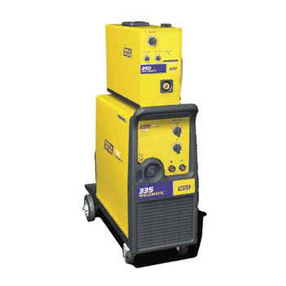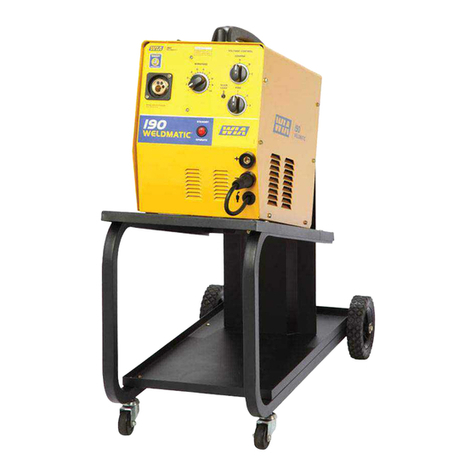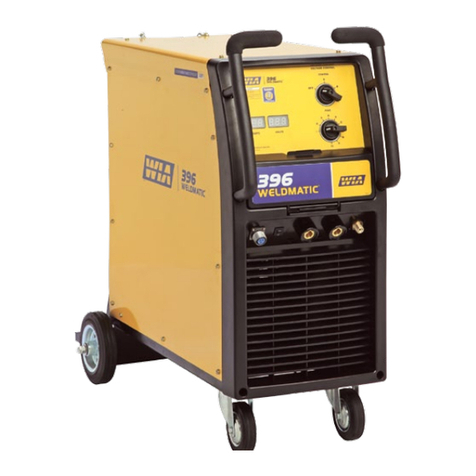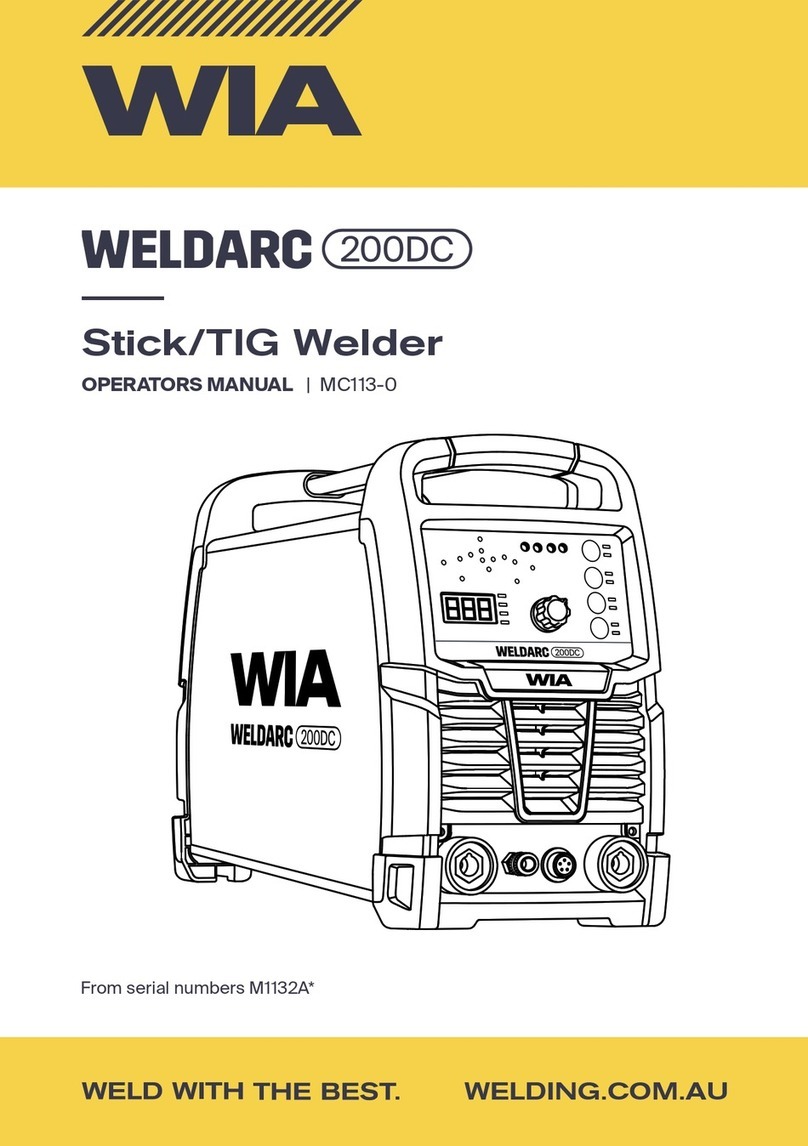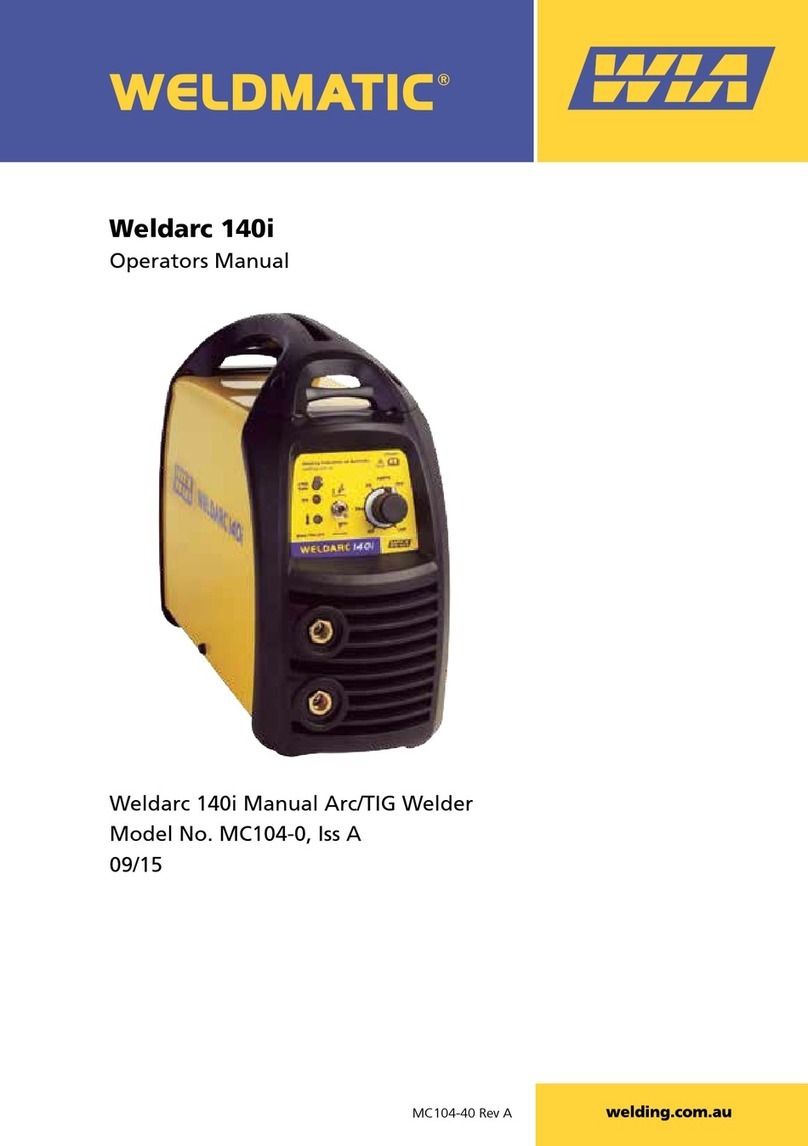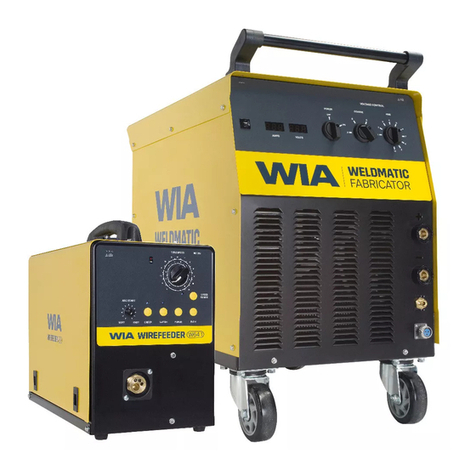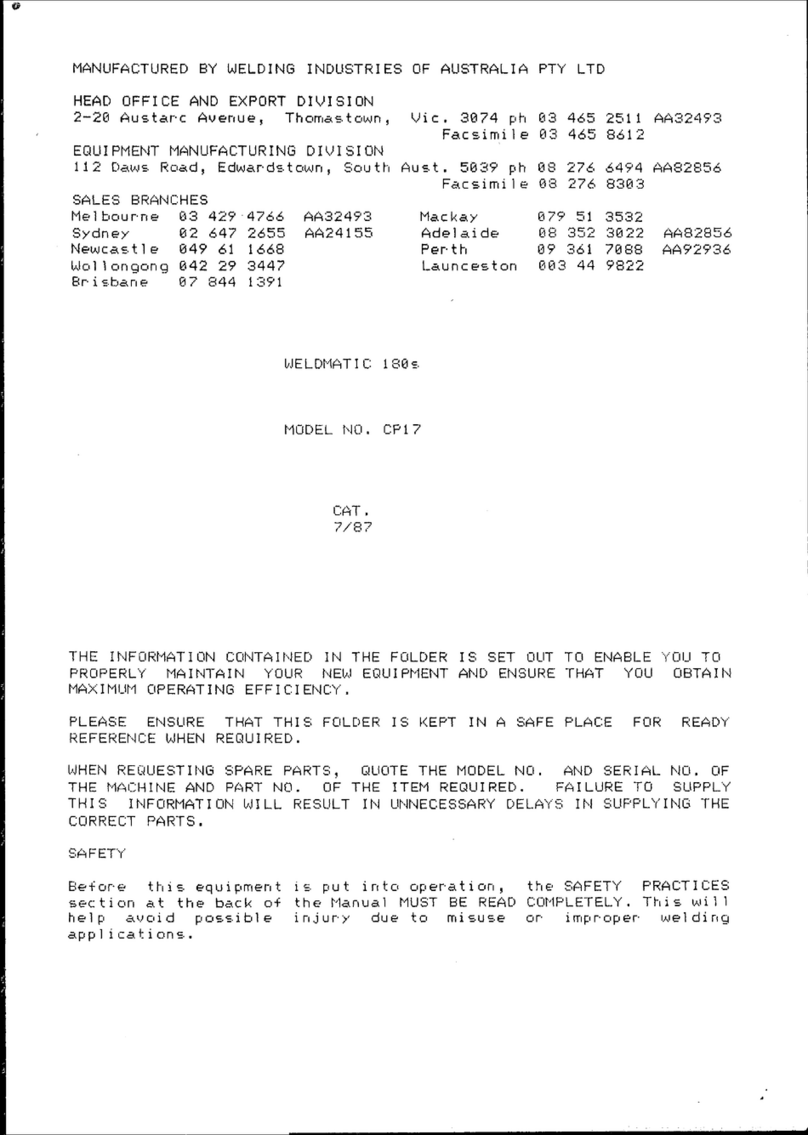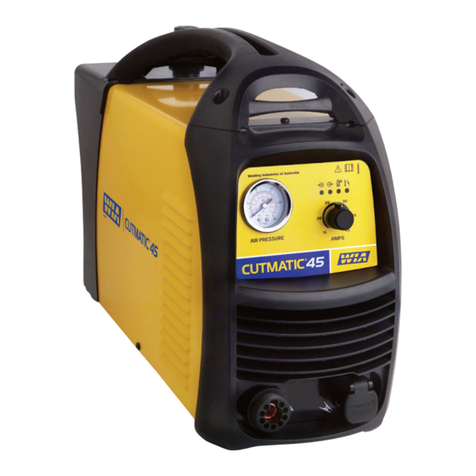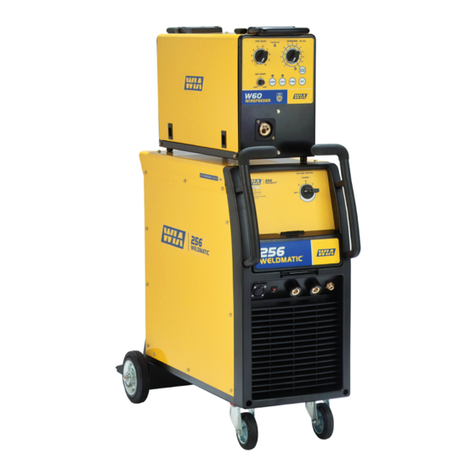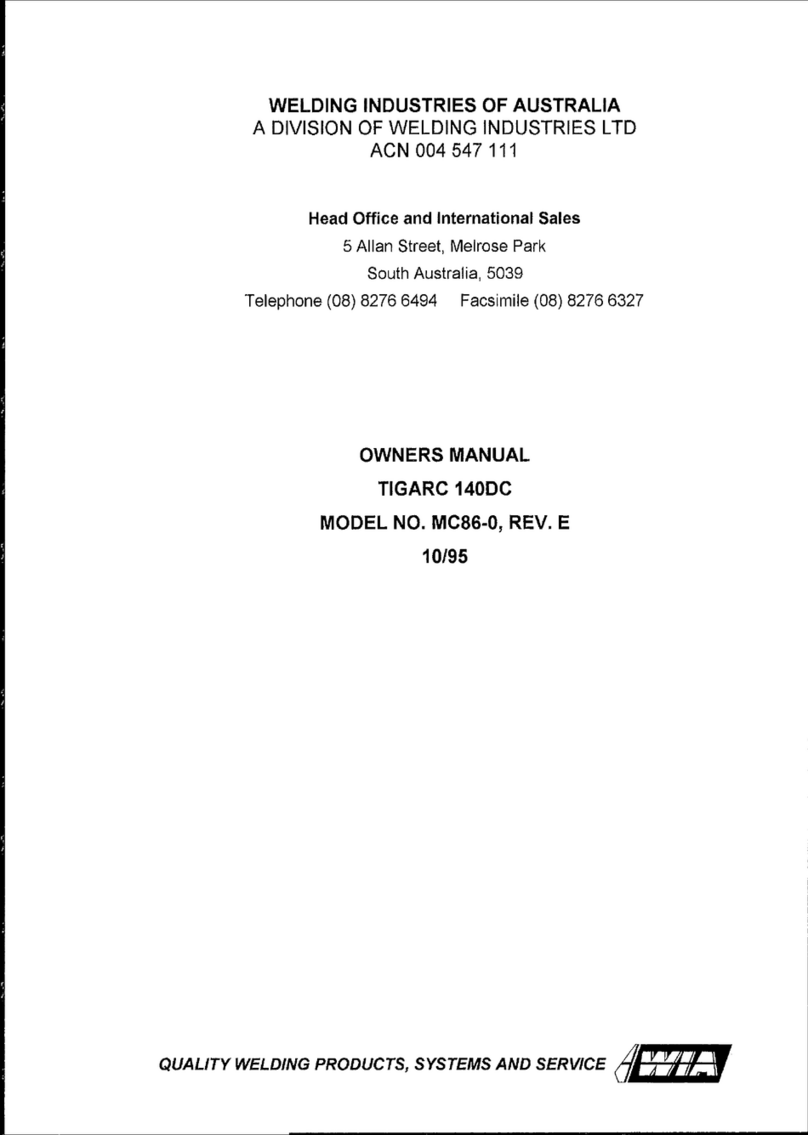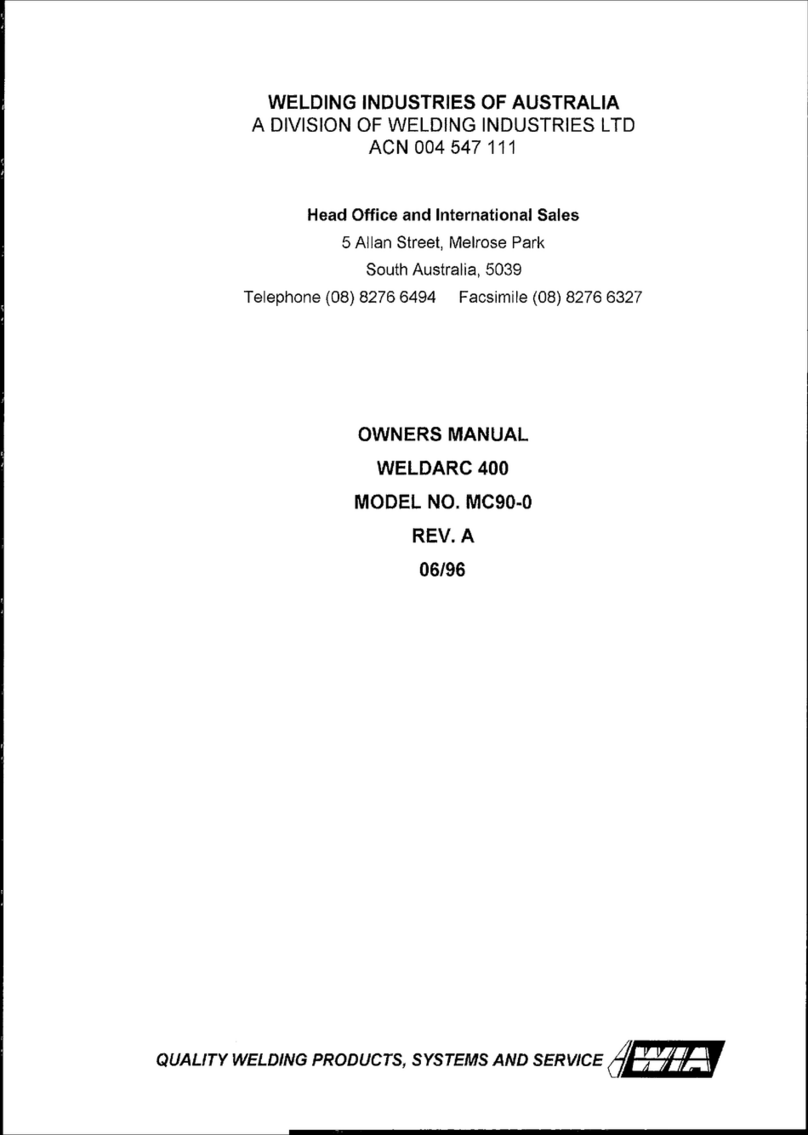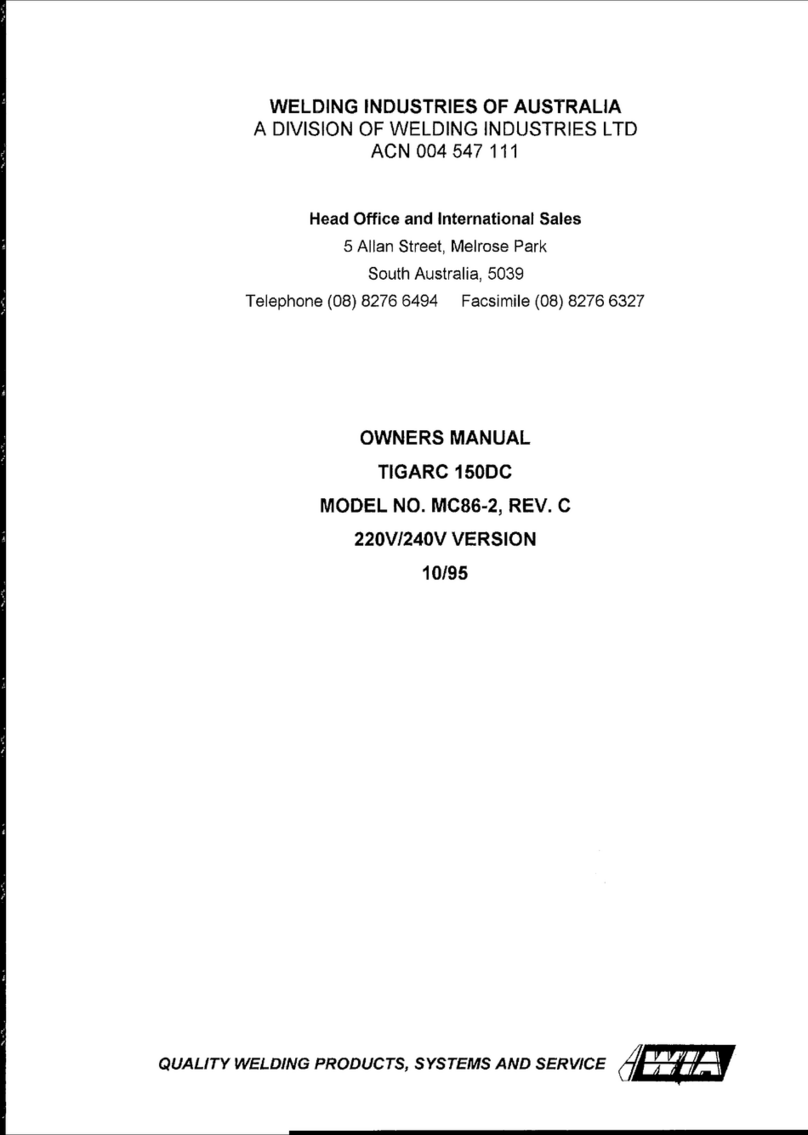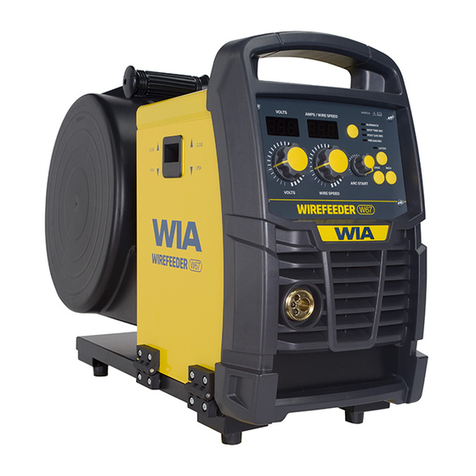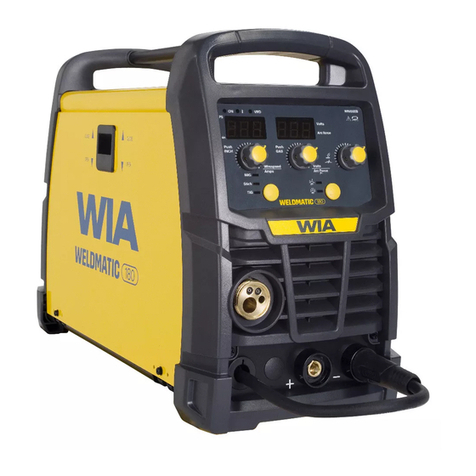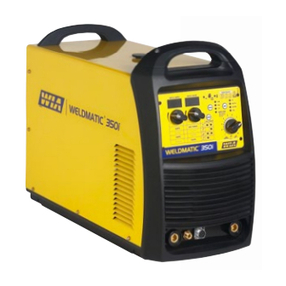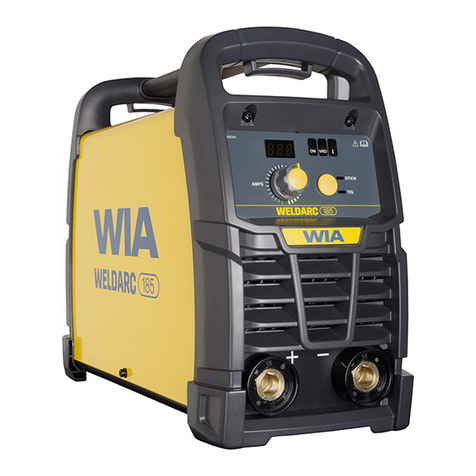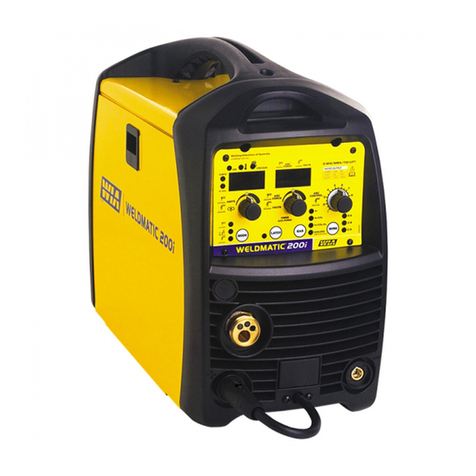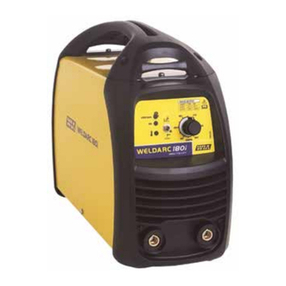
Page
IO
VORTEX
AD15
OWNERS
MANUAL
C)
GTAW
ARC
INITIATION, TOUCHSTARTTECHNIQUE.
Lightly touch the tungstenelectrodeontothe workpiece, then
in
asmooth
movement, lift the torch
to
initiate anarc slightly longer thanthediameter ofthe
electrode. Once the arc
is
stable,
a
normal working arclength can beestablished.
A
copper striking plate is recommended
to
minimise electrode contamination.
A
contaminated electrode will produce an unstable arc, and must be reground before
further use.
D)
GTAW ARC INITIATION,
HF
TECHNIQUE.
Rest an edge
of
the open endof the ceramic gasnozzle onthe workpiece, with
the tip
of
the electrode approximately 6mm from the work.
To
initiate the arc, close
thetorch switch. If themainarcdoesnot transfer,thetorchmayberotated
to
decreasethe electrode
to
workdistance.
To
avoid contamination, caremustbe
taken not
to
touch the electrode ontothe work.
.-
Following arc initiation, thetorchshouldberotated
to
anormaloperating
position.
8.
GENERAL
MAINTENANCE
Before removing the-:machinecover,
ENSURE
fhat the unif is disconnectedfrom
the mainspower supply, When-fhe--unit
is
energised
LETHAL
VOLTAGES
are
present
on
the electrical components enclosed.
Care should be taken to prevent excessive build-up
of
dust and dirt within the
welding power source.
It
is recommended that at regular intervals, according
to
the
prevailing conditions, the machine covers be removed andany accumulated dust be
removed by the use
of
dry, low pressure compressedair.
Inspect the visible componentsforanysigns of overheating
or
other damage.
Report any observed problems to qualified servicepersonnel.
9.
FAULT
FINDING
NO
WELDING
CURRENT
Check that mains supply is available at the Power Source, ie. that the fan
is
runningand the
POWER
ON
Led is
lit.
Checkfor continuity of the weldingcurrent
circuit, ie. work lead, work clamp and electrode holder.
Check that the electrode and work leads are correctlyconnected for the welding
process in use,.
The welding power source incorporates inbuilt protection devices which will tripif
the unit is overloaded.
In
this event, the machine will notdeliver welding current, and
the redfault indicator LED
2
(Ref. Figure
l)
will be illuminated. Inthis instance, leave
the machineenergised with the fan running
to
achieve themaximum cooling rate.
If
equipment failureissuspected,forwardtheunit
to
your nearest
WIA
Sales
and ServiceBranch or qualified service agent.
